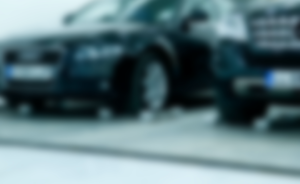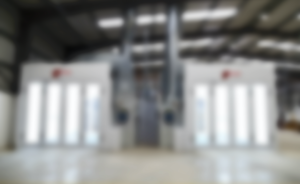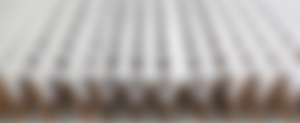What is shot blasting and do I need shot blasting equipment?
Shot blasting is a mechanical cleaning process that uses spheres of material to remove oxides and other debris from the surface of another material.
Also known as abrasive blasting, it is the process of applying high pressure to an abrasive stream of materials in order to smooth a rough surface, roughen a smooth surface, and form or remove surface contaminants. The blast material, also known as the medium, is propelled by a pressurised fluid which usually takes the form of compressed air, a high pressure water jet or a centrifugal wheel.
Removing contaminants is achieved by forcibly propelling the material through a blasting process, and applying it to the surface of the medium. Shot blasting is just one method of abrasive blasting that is used in several industries today, including: marine ship building, steel fabrication, oil and gas, construction and the automobile industry.
Other methods of abrasive blasting depend on the material and desired effect. There are
many reasons why a material might require abrasive blasting:
- Making a rough surface smooth
- Making a smooth surface rough
- Altering the shape of the workpiece
- Remove surface contaminants
- Remove previous coatings
- Clean or prepare a surface
- Finish a surface
The type of blasting and material used is determined by a variety of densities, materials, hardness, particle sizes, and shapes, all of which must be considered in order to achieve the desired effect.
History of shot blasting
The sandblasting process, also known as abrasive blasting, was first patented in 1869 in the US by Benjamin Tilghman. After it’s early introduction, sandblasting was soon banned in the 1900s due to the severe health consequences of high-risk silica dust exposure. This ban was introduced after the discovery that silica fractures were respirable upon impact, putting the operator at risk of Silicosis and other respiratory diseases.
Since silica sand was prohibited in sand blasting in the early 1950s, water was introduced into abrasive blasting. Years on, there are a number of ways to achieve abrasive blasting techniques through the use of machinery, including but not limited to: bead blasting, wheel blasting, air blasting, and wet blasting.
Do I need shot blasting equipment?
If you are planning to set up your own shot-blasting process at home or at work, there are a number of items you will need to conduct it properly and safely.
Compressor
The first thing you will need is a mobile compressor. They are rated on their air output using CFM (air volume) and PSI (air pressure) and come in a variety of sizes from 140, 180, 260 & 350 CFM. Shot blasting works best when using a compressor with a higher cubic feet per metre (CFM).
Blast pot
Blast pots come in a variety of sizes and are measured in litres. Typically, the larger the pot, the more material inside, the longer the shot blasting process can run. Pots come with manual controls (two on-off ball valves) or a remote valve which is controlled by the operator using a deadman handle at the end of the blast hose.
Blast hose
Blast hoses are made of very durable materials, when paired with small compressors and fine abrasives they can last a long time.
Nozzle
This is what sits on the end of the blast hose, and whilst it is the smallest piece of equipment, it is one of the most important parts for achieving the desired finish. There are three types of nozzles on the market:
Silicon nitride: The most popular and versatile, these hard wearing nozzles have a strong lining in a lightweight coating, allowing optimum operator comfort and increased productivity.
Tungsten carbide: These long lasting nozzles are often coated in a heavy metal, making them ideal for use in harsh environments like shot blast bays.
Boron alloy: These throwaway nozzles are inexpensive and don’t last very long, typically they are designed for projects which require precise costing, or for the occasional blast.
Blast helmet
Blast helmets are an essential safety measure when undergoing this type of work, they allow you to see and breathe whilst conducting blasting.
Breathing air filter
This is a free-standing large charcoal filter pack designed to remove oil mist, moisture and odours from your compressed air supply.
And finally, abrasives:
You’ll need to determine what type of material you are planning to use to blast your medium with. Note that whilst silica sand is still available to buy, you run the risk of getting fined for using it for this process as it is illegal.
Shot blasting with Junair Spraybooths
Junair offers shot blasting equipment which incorporates market leading energy saving technology, providing the lowest life cycle costs for equipment whilst maintaining the fastest process times. Our spray booth equipment and shot blasting processes we offer include:
Automated
This labour saving shot blasting machine significantly simplifies the blasting process.
Manual
Manual shot blasting is intended for oversized metal structures, this type of cleaning is performed by a shot blasting machine that sprays a jet of compressed air containing the abrasive media.
Rotary
Suitable for various shapes and dimensions and casts, rotary shot blasting is also known as table type shot blasting and can be used with steel, non-ferrous (low-iron) metal parts and parts made from fragile materials.
Wheel machines
Working in conjunction with the leading suppliers, Junair can offer systems that include automated blast, manual blast, rotary systems and for larger shot blasting projects we can include wheel machines for a complete range of metals and composites. We can supply blast pots, hoses and the required PPE.
For more information on our award winning spray booth products and equipment please call our sales team on 01706 363 555, email us your enquiry at sales@junair.co.uk or alternatively, complete our contact form.
Written by


